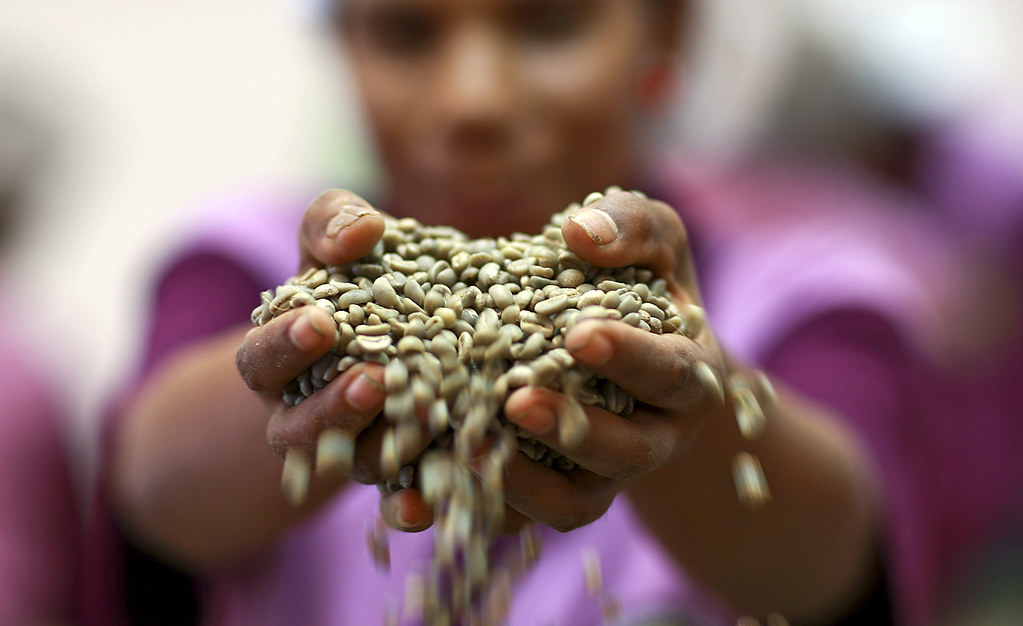Unearthing the Ancient Roots of Coffee: The History of Coffee
Coffee, the aromatic and energizing beverage that has become an integral part of our daily lives, has a rich and fascinating history. From ancient legends to its widespread cultivation and consumption today, coffee has evolved into a global phenomenon. In this article, we delve into the history of coffee, tracing its origins, journey across continents, and enduring impact on cultures and economies. Drawing from credible sources, we embark on a captivating exploration of the fascinating history of coffee.
1. Origins and Legends:
The origins and legends of coffee trace back to ancient times and have become intertwined with various cultural narratives throughout history. While the precise source of coffee remains uncertain, several captivating legends shed light on its early history.
One of the most famous legends traces coffee’s beginnings to the Ethiopian region of Kaffa. According to this legend, a young goatherd named Kaldi accidentally discovered coffee’s stimulating properties. As the tale goes on, Kaldi notices that his goats become unusually energetic after consuming the red berries from a particular tree. Curious, he sampled the berries and experienced a newfound alertness. Intrigued by this discovery, Kaldi shared his findings with a local monk, who experimented with the berries to create a drink.
The monk boiled the berries and drank the resulting brew, which helped him stay awake and focused during long prayer sessions. The news of this energizing drink soon spread, and thus, the consumption of coffee began to take root.
Another tale attributes the discovery of coffee to Sheikh Omar, a wise mystic in the Arabian Peninsula during the 9th century. Legend says that Omar was exiled to a desert cave where he survived on little food. One day, he chewed on the berries from a nearby shrub, finding them bitter. To make them palatable, he roasted the berries over a fire. The roasting process transformed the berries into fragrant beans, which Omar ground and boiled, creating the first-ever cup of coffee. He noticed that the drink kept him awake and sustained him through his prayers, leading to coffee’s introduction to the world.
Historically, coffee cultivation and consumption expanded from the Arabian Peninsula into the wider Islamic world during the 15th and 16th centuries. Coffeehouses, known as “qahveh khaneh,” soon emerged in cities like Cairo, Mecca, and Istanbul, becoming vital hubs for social gatherings, intellectual discussions, and entertainment.
The spread of coffee across Europe came through various routes. One famous tale involves Baba Budan, a 17th-century Indian pilgrim enchanted by coffee, during his journey to Mecca. Upon his return to India, he secretly smuggled seven coffee beans back home, planting them in the hills of Chikmagalur in Karnataka, India. These seven beans are believed to have laid the foundation for coffee plantations in India and later reached Europe through the efforts of European traders.
As coffeehouses began to spring up across the European continent, they became centers of intellectual and cultural exchange, eventually leading to “coffeehouse culture” that shaped the Age of Enlightenment.
Today, coffee holds a significant place in the daily lives of people around the globe. Its rich history, intertwined with legends and stories of discovery, continues to captivate and inspire coffee enthusiasts worldwide.

2. Spread to Arabia and the Islamic World:
The spread of coffee to Arabia and the Islamic world is a fascinating historical journey that has profoundly impacted the region’s cultural, social, and economic aspects. Coffee’s introduction to the Islamic world dates back to the 15th century.
According to popular legend, the discovery of coffee’s energizing effects occurred in the Ethiopian plateau, where a goatherd named Kaldi noticed his goats becoming unusually lively after eating the red berries from a particular tree. Intrigued, Kaldi sampled the berries himself and experienced a similar surge of energy. He shared his discovery with a local monk, who found that brewing the beans into a drink helped him stay awake during long hours of prayer and meditation. From there, the knowledge of coffee spread through monasteries and religious communities.
During the 15th century, coffee cultivation and trade expanded from Ethiopia to the Arabian Peninsula, specifically in the region of Yemen. The port city of Mocha became a prominent center for the coffee trade, where merchants from Africa, Persia, and India exchanged goods, including coffee beans.
The popularity of coffee as a beverage and social pastime quickly grew within Islamic communities. Coffeehouses, known as “qahveh khaneh” in Persia (modern-day Iran) and later as “qahwa” in Arabic, began to spring up in major cities throughout the Islamic world. These establishments served as vital social hubs, where people would gather to engage in discussions, share stories, listen to music, and play games, all while enjoying cups of coffee. These coffeehouses played a significant role in fostering intellectual and cultural exchange and became associated with stimulating creativity and critical thinking.
As coffee’s popularity continued to spread, it attracted the attention of various ruling authorities, leading to support and condemnation. Some rulers and religious leaders saw the coffeehouses as spaces of provocative discussions, leading to efforts to ban or regulate them. However, the allure of coffee prevailed, and the coffeehouse culture persevered, evolving into a cherished tradition across the Islamic world.
The significance of coffee extends beyond social and cultural domains. Coffee became a significant commodity in trade, driving economic growth in the regions where it was cultivated. Coffee plantations were established in several areas, and the roasting, grinding, and brewing methods were refined.
During the 16th and 17th centuries, the Ottomans played a pivotal role in spreading coffee culture across their vast empire, extending from the Middle East to parts of North Africa, Eastern Europe, and the Levant. Through Ottoman territories, coffee finally reached Europe, starting with the opening of the first coffeehouse in Venice in the early 17th century.
In summary, the spread of coffee to Arabia and the Islamic world was a transformative historical process. From its humble origins in Ethiopia to the bustling coffeehouses of the Middle East, coffee became an integral part of Islamic culture, fostering intellectual exchange, shaping social dynamics, and driving economic prosperity. Today, coffee continues to be deeply embedded in the fabric of the Islamic world, a testament to its enduring legacy.

3. Introduction to Europe:
Introducing coffee to Europe marked a significant turning point in the continent’s history and culture. Coffee, derived from the Coffea plant’s beans, originates in the Ethiopian plateau, where its consumption as a beverage dates back centuries. However, it wasn’t until the 17th century that coffee began to gain popularity in Europe.
The first recorded instance of coffee being introduced to Europe was in the 16th century when Venetian merchants returned the exotic beverage from their travels to the Middle East. Initially, coffee was met with curiosity but also suspicion, as its stimulating effects were unfamiliar to Europeans accustomed to traditional beverages like beer and wine.
By the early 17th century, coffeehouses began to spring up in major European cities, becoming popular social hubs where people could discuss politics, business, and culture. These coffeehouses, often called “penny universities,” offered a unique space for intellectual exchange and conversation. London, in particular, saw a rapid rise in coffeehouses, with hundreds of establishments across the city.
The spread of coffee consumption was not without opposition. Some conservative elements saw coffee as a threat to society, associating it with idleness, immorality, and political dissent. However, its popularity grew, and coffeehouses became integral to European urban life.
The expansion of European colonial powers into coffee-producing regions further contributed to the spread of coffee across the continent. As Europeans established plantations in areas like the Caribbean, Central and South America, coffee became more accessible and affordable.
Throughout the centuries, coffee became deeply entrenched in European culture. Various brewing methods, such as espresso, cappuccino, and latte, were developed, and coffee rituals became an essential part of daily life for many Europeans. The drink’s popularity soared during the Age of Enlightenment as coffeehouses continued fostering intellectual discussions and exchanging ideas among writers, philosophers, and scientists.
Today, coffee remains an integral part of European culture and lifestyle, with diverse coffee cultures in different countries. From the traditional coffeehouses of Vienna to the bustling espresso bars in Italy, Europe’s love affair with coffee endures, and it continues to evolve with the introduction of new brewing techniques and specialty coffee trends.
In conclusion, introducing coffee to Europe played a transformative role in shaping the continent’s social fabric and intellectual discourse. From its humble beginnings as an exotic curiosity to becoming an integral part of European culture, coffee’s journey reflects its status as one of the most beloved and widely consumed beverages worldwide.

4. Coffee and Colonialism:
Coffee and colonialism are intricately linked, as coffee cultivation and trade history is closely tied to the expansion of colonial empires during the 17th to 19th centuries.
Coffee is believed to have originated in Ethiopia, and its consumption spread to the Arabian Peninsula by the 15th century. The drink gained popularity in Islamic societies, becoming an integral part of their culture and social gatherings.
During the 16th century, coffee made its way to Europe through trade routes established by merchants and traders. Initially, coffeehouses were primarily found in major port cities like Venice, Marseille, and London, where they became centers of intellectual exchange and cultural gatherings.
The Dutch were among the first to cultivate coffee commercially in their colony of Java (modern-day Indonesia) during the early 17th century. They soon established plantations in other territories, such as Suriname and Ceylon (now Sri Lanka). Coffee production in these colonies was labor-intensive and relied heavily on forced labor, including enslaved Africans and indentured laborers from Asia.
The Portuguese also played a significant role in the spread of coffee, introducing it to Brazil in the 18th century. The Brazilian coffee industry grew exponentially, fueled by the vast tracts of land and the widespread use of enslaved labor, making Brazil the world’s largest coffee producer for many years.
Colonial powers, seeking to maintain control over coffee production, often imposed strict regulations and controlled the distribution of coffee plants and seeds to prevent other regions from becoming competitors. They also imposed heavy taxes and levies on coffee exports, further enriching themselves at the expense of the colonies.
As the demand for coffee soared in Europe and North America, colonial powers expanded their coffee plantations, disposing of indigenous people’s lands and exploiting vulnerable populations to meet the growing demand.
While introducing coffee brought economic opportunities to some regions, it also perpetuated a cycle of dependence and exploitation in others. The harsh working conditions, environmental degradation, and socio-economic inequalities resulting from coffee cultivation during the colonial period continue to have lasting impacts in many coffee-producing countries today.
In conclusion, coffee’s journey from its origins in Ethiopia to becoming a global commodity is intertwined with the history of colonialism. The exploitation of labor and resources during the colonial era has left a complex legacy that still shapes the global coffee industry and the societies where coffee is cultivated. Understanding this historical context is essential to address the social and economic challenges that persist in the world’s coffee-producing regions.

5. Rise of Coffee Plantations:
The rise of coffee plantations played a significant role in shaping global trade, culture, and economies. The story of coffee begins in the ancient coffee forests of Ethiopia, where the native population first discovered the energizing properties of the coffee bean. By the 15th century, coffee had spread to the Arabian Peninsula, where roasting, grinding, and brewing coffee became popular.
Coffee’s popularity continued to grow, and by the 17th century, it had reached Europe. The first coffeehouses appeared in cities like Venice, London, and Paris, becoming important centers of intellectual exchange and social interaction. Coffeehouses became known as “penny universities” because patrons could engage in lively discussions and debates on various topics for the price of a cup of coffee.
As coffee’s demand surged, European colonial powers sought to cultivate it in their colonies. The Dutch were among the first to establish coffee plantations in their colonies in the East Indies (present-day Indonesia). Following suit, other colonial powers, including the French, Spanish, Portuguese, and British, began cultivating coffee in their tropical colonies.
Coffee production took off in the 18th and 19th centuries in the Americas. The Caribbean, Central America, and South America, particularly Brazil, became significant coffee producers. Brazil’s coffee industry, in particular, boomed in the 19th century thanks to favorable climate conditions and vast expanses of land ideal for coffee cultivation. The country soon became the world’s largest coffee producer and remains a dominant force in the global coffee market today.
The rise of coffee plantations also had significant social and economic impacts on the regions where they were established. Large-scale coffee cultivation often relied on slave labor or exploited labor practices, leading to a dark history of human suffering and exploitation in some areas. However, coffee cultivation also brought economic development and wealth to some regions, contributing to the growth of cities and infrastructure.
In the 20th century, advancements in transportation and communication further fueled the growth of the coffee industry. Coffee production shifted to various countries worldwide, including Africa and Asia, creating diverse coffee-growing regions, each known for unique flavor profiles.
Today, coffee is one of the most traded commodities globally, and coffee plantations continue to be vital to the livelihoods of millions of people worldwide. The demand for high-quality, specialty coffees has led to a renaissance of small-scale, sustainable coffee farms, emphasizing fair trade practices and environmental conservation.
Despite the challenges posed by climate change and economic fluctuations, the rise of coffee plantations has left an indelible mark on our world. Coffee remains an integral part of countless cultures and daily routines, connecting people across the globe through a shared love for this cherished beverage.

6. Modern Coffee Culture:
The modern coffee culture is a vibrant and dynamic phenomenon that has significantly evolved over the past few decades. Coffee has transformed from a simple morning pick-me-up to a social and cultural experience, playing a central role in people’s lives worldwide. This shift in coffee culture can be attributed to various factors, including globalization, urbanization, and the rise of specialty coffee.
One of the critical aspects of modern coffee culture is the proliferation of coffee shops and cafes. These establishments have become communal spaces where people gather to socialize, work, or relax. Coffee shops’ ambiance, decor, and overall experience have become essential in attracting customers. Baristas, the skilled coffee makers, have become like artisans, elevating the art of brewing coffee to a whole new level.
Specialty coffee has played a vital role in shaping modern coffee culture. Consumers are now more conscious about their coffee’s origin, quality, and roasting process. They seek unique and exotic flavors from different regions, encouraging sustainable and fair-trade practices within the coffee industry.
Alongside this trend, various brewing methods, such as pour-over, French press, Aeropress, and espresso-based drinks, have gained popularity. This diversification has elevated the appreciation and knowledge of coffee among enthusiasts, turning coffee into a connoisseur’s delight.
The influence of technology has also impacted coffee culture. Mobile apps allow coffee lovers to locate nearby cafes, explore new blends, and even place orders in advance. Social media platforms have become hubs for sharing latte art, coffee recipes, and experiences, fostering community among coffee enthusiasts worldwide.
Coffee has also transcended its role as a mere beverage, inspiring many coffee-related products and events. Coffee-related merchandise, such as mugs, t-shirts, and brewing equipment, have become popular among consumers. Additionally, coffee festivals, competitions, and workshops have gained traction, creating spaces for coffee lovers to connect and learn from industry professionals.
The modern coffee culture is a fusion of tradition and innovation, blending the comforting rituals of coffee consumption with a new sense of adventure and exploration. It has become a lifestyle, reflecting contemporary society’s changing tastes, preferences, and values. As the coffee culture continues to evolve, it will undoubtedly bring new trends, experiences, and possibilities to be savored by coffee enthusiasts around the globe.
Conclusion:
The history of coffee is a captivating tale of discovery, trade, and cultural exchange that spans centuries and continents. From its humble beginnings in ancient Ethiopia to its global dominance today, coffee has evolved into an iconic beverage that fuels conversations, energizes mornings, and connects people worldwide. Its journey from the legends of goat herders to the bustling coffeehouses of Europe and the sprawling plantations of the Americas is a testament to its enduring appeal. As we savor our daily cup of coffee, we can appreciate the rich history that has shaped this beloved drink into a global phenomenon.
Watch Documentory
FAQ
Q1: Where does coffee originate from?
A1: Coffee originates from Ethiopia, discovered and cultivated in ancient times.
Q2: How did coffee spread around the world?
A2: Coffee was introduced to the Arabian Peninsula in the 15th century and became integral to Arab culture. From there, it spread to Europe through trade routes established by the Ottoman Empire. European colonization played a significant role in further spreading coffee cultivation to regions such as Asia, the Caribbean, and the Americas.
Q3: When did coffeehouses first appear?
A3: The first coffeehouse opened in Venice, Italy, in 1645. Coffeehouses became popular social gathering places and centers of intellectual discussions and cultural exchange.
Q4: How did coffee influence European culture?
A4: Coffeehouses became important social and intellectual hubs in Europe, fostering the exchange of ideas and promoting discussions among philosophers, artists, and intellectuals. Coffee’s popularity influenced European drinking habits and even contributed to the emergence of coffeehouse culture in cities like Vienna, London, and Paris.
Q5: Was coffee ever banned or faced opposition?
A5: Yes, coffee faced opposition and was banned in some regions at different historical points. In the 16th century, coffee was prohibited in Mecca and other parts of the Ottoman Empire due to concerns about its stimulating effects. However, the bans were largely unsuccessful, and coffee continued to gain popularity.
Q6: How did coffee become popular in America?
A6: Coffee was introduced to North America during the colonial period. Tea was initially more popular, but during the American Revolution, drinking coffee became a patriotic act to reject British tea. As a result, coffee became the preferred beverage in the United States and remains popular today.
Q7: What is the significance of coffee in Latin America?
A7: Coffee cultivation became crucial to Latin America’s economy during the 19th and 20th centuries. Countries like Brazil, Colombia, and Costa Rica became significant coffee producers, shaping their economies and landscapes. The coffee industry played an essential role in developing regional infrastructure and trade.
Q8: When did specialty coffee emerge?
A8: Specialty coffee emerged in the late 20th century as a response to coffee’s mass production and commercialization. It focuses on higher-quality beans, sustainable farming practices, and unique flavors, providing a more refined and nuanced coffee experience.
Q9: How has coffee consumption evolved?
A9: Coffee consumption has evolved from a regional phenomenon to a global one. It has transitioned from a beverage enjoyed in traditional cultures to a widely consumed and diverse industry with various brewing methods, flavors, and styles.
Q10: What role does coffee play in modern society?
A10: Coffee continues to be a significant part of modern society, fueling daily routines, social interactions, and even professional environments. It remains a symbol of comfort, productivity, and social connection across cultures worldwide.
Citations
- Pendergrast, M. (2010). Uncommon Grounds: The History of Coffee and How It Transformed Our World. Basic Books.
- Ellis, A. (2015). The Oxford Companion to Coffee. Oxford University Press.
- Clark, M. (2000). The Struggle for the Breeches: Gender and the Making of the British Working Class. University of California Press.
- Petcher, T. (2014). Coffee: A Dark History. Amberley Publishing.
- Ukers, W. H. (1922). All About Coffee. The Tea and Coffee Trade Journal Company.
- Thompson, K. (2011). Coffee: A Cultural History from Around the World. Firefly Books.
- Weinberg, B. A., & Bealer, B. K. (2001). The World of Caffeine: The Science and Culture of the World’s Most Popular Drug. Routledge.
- Standage, T. (2006). A History of the World in 6 Glasses. Walker & Company.
- Cowan, B. W. (2005). The Social Life of Coffee: The Emergence of the British Coffeehouse. Yale University Press.
- Matar, A. (2012). A Concise History of Coffee. Hesperus Press.


